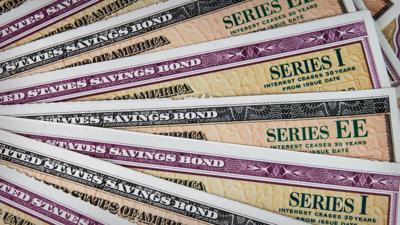Each year on May 1 the interest rates paid on federal I-bonds are adjusted based on inflation.
That means right now, a few days before the end of April, is the last opportunity to buy an I-bond at current rates that amount to 5.27 percent interest, annualized. Whatever rates are in place when an I-bond is purchased remain in force for six months before changing.
The end of the month — any month — is always the best time to buy an I-bond. The first days of a month are the best time to sell one. I'll explain why.
Backing up a bit, here's what I-bonds are, and why they were the hot investment in 2021 and 2022.
Officially called Series I Savings Bonds, government-issued I-bonds pay an interest rate linked to inflation, which changes twice yearly, on May 1 and Nov. 1. They may also pay a fixed interest rate, as they do now, which is combined with the inflation-adjusted rate.
They are meant to be a safe place to keep savings, and keep those savings from losing value due to inflation.
In mid-2022 when inflation was running hot, I-bonds were paying an annualized 9.62 percent interest rate at a time when banks were paying hardly any interest on savings. Needless to say, people (including me) rushed to buy them.
I-bonds can be redeemed after 12 months have passed, but if they're cashed in before five years have passed there's a penalty of the last three months of interest. Proceeds are exempt from state and local income taxes, but are federally taxable.
I-bonds pay the interest rate in effect when they were purchased, for six months, then switch to the newer rate for six months, and so on. So, if someone were to buy an I-bond before the end of April, they would get the current 5.27 percent interest rate through September, then would switch to the new rate that will be set May 1, for the next six months.
The new rate had not been announced when this was written, but it was expected to be about a percentage point lower than the current rate. Over 12 months, the current and anticipated rates would amount to roughly 4.75 percent annual interest.
Here are two important things people may overlook about I-bonds:
- Each month's I-bond interest is paid on the first day of the month, as long as that bond is still owned at the end of the month. That means an I-bond purchased near the end of the month earns interest for the entire month. An I-bond earns no interest for month in which it's sold, so sell at the start of the month.
So, the first days of the month are the best time to sell an I-bond, and the last days are the best time to buy one. I-bonds are bought and sold online at treasurydirect.gov, in amounts as little as $25 with a yearly maximum of $10,000. Federal income tax refunds can also be directed to the purchase of I-bonds.
- The I-bond interest rate is the combination of two rates; a fixed rate that does not change as long as the I-bond is owned (or 30 years, whichever is less), and the variable rate that changes twice yearly based on inflation.
That's important, because the high-interest I-bonds people bought in 2022 had a fixed rate of zero, while I-bonds available through the end of April have a fixed annualized rate of 1.3 percent. This month people owning I-bonds are earning interest rates that range from 3.94 to 7.61 percent, depending on the fixed rate in place when their I-bond was purchased.
In November I recommended that people who purchased I-bonds with a fixed rate of zero should sell them, and replace them with newly issued ones in order to lock in the fixed rate. That rate, 1.3 percent, may not sound like much but it's the highest fixed rate since 2007. The highest ever was 3.6 percent, in 2000.





